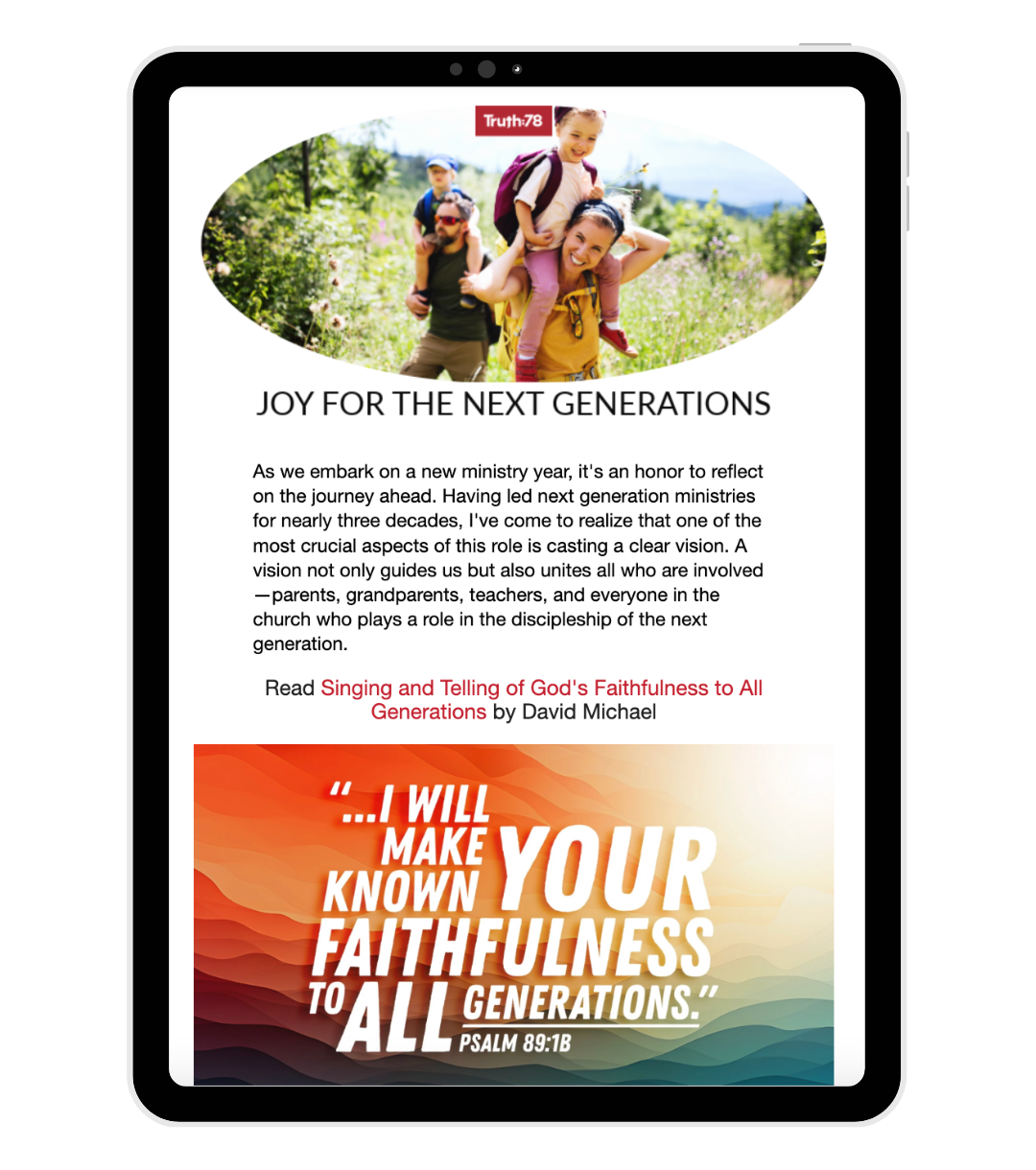Have you ever been frustrated as a teacher that your students don't seem to be "getting it"? Does it ever feel as if the biblical truths you are teaching aren't sinking in to their hearts? How do we help children apply what they are reading in the Bible to their own lives? This last question was the main focus of Sally Michael's seminar, "Reaching the Heart: The Importance of Application." Her summary of the “Five Levels of Learning," as described in Lawrence Richards’ book, Creative Bible Teaching provides a helpful precursor in both a biblical foundation and the practical "how to" of application. Recognizing and understanding these levels of learning will help both parent and teacher alike.
Here is Sally’s summary of these five levels: The first two levels of learning—rote and recognition—stress facts. The teacher is active as the teller of these facts.
Level 1–Rote: Child can repeat the facts without thought of meaning. You can see this in a toddler who can parrot a Bible verse, or a child who can tell you the facts of a Bible story but has no understanding of the meaning of those facts. Example: The story of baby Moses being found by Pharaoh’s daughter. The child can tell you that mother made a basket, put Moses in the basket, and put him in the river. Sister watched the basket and saw Pharaoh’s daughter find Moses in the basket.
Level 2—Recognition: Recognition is the ability to recognize biblical concepts. You could also call this comprehension of the facts. Example:If you asked the child a multiple choice question about the facts, he can process the answer and reflect an understanding answer. Why did mother put Moses in the basket? [child can pick out the answer: because she could not hide him any longer] The next three levels go beyond facts to meaning. In these levels, the teacher is not an active teller, but rather a guide. The students are active participants rather than just listeners.
Level 3—Restatement: Restatement is the ability to express or relate concepts to a biblical system of thought. The child understands the meaning in terms of biblical worldview. This requires the child to do more than just recognize the truth, but rather to relate the truth to other ideas. Example:Why do you think mother had the idea to make a basket? [God gave her the idea as His way of protecting Moses.] (The child understands that God interacts with man.) In the last two levels of learning—relation, and realization or response—the student is able to understand the meaning in terms of his own life and personal experience.
Level 4—Relation: Relation is the ability to relate Bible truths to life and see an appropriate response to that truth. In other words, the student understands the relationship between the truth and his own life.
Example: Could be a flash of insight: Wow! I guess I don’t have to worry about whether God can protect me on my camping trip. Could be understanding developed through questioning: Jimmy, do you ever worry about getting hurt? [Yes, I am sometimes afraid of storms. I sometimes wonder if my house will get struck with lightning.] Does this story help you with your fears? [Well, I think if God is big enough to take care of Moses in the river and to protect him from being killed by Pharaoh, He is big enough to take care of me. The next time I am in a storm, I am going to remember that God is big enough for anything.] If something bad did happen to you, do you think that God is big enough to help you in that situation? In order for a child to respond to the Word of God, he must first understand how Scripture applies to his life—he must understand how he can act on the truth he has heard. It is important to help the child answer the question, "What difference does this make in my life?"
Once again, rather than tell children the concepts and application of the lesson, we must, lead children to discover the truth. Ask many questions and encourage children to think, look up answers for themselves, and draw conclusions. Then, move to encouraging the children to respond to what they have discovered.
Level 5—Realization (or Response): Child makes a response to the truth—he applies biblical truths to daily life. He acts on the Word instead of just hearing it. Example: Jimmy remembers that God is a big God the next time he is in a fearful situation. He remembers the story of Moses and God’s care, and he prays and rests in God.
You can also listen to the seminar or download the notes (PDF).






